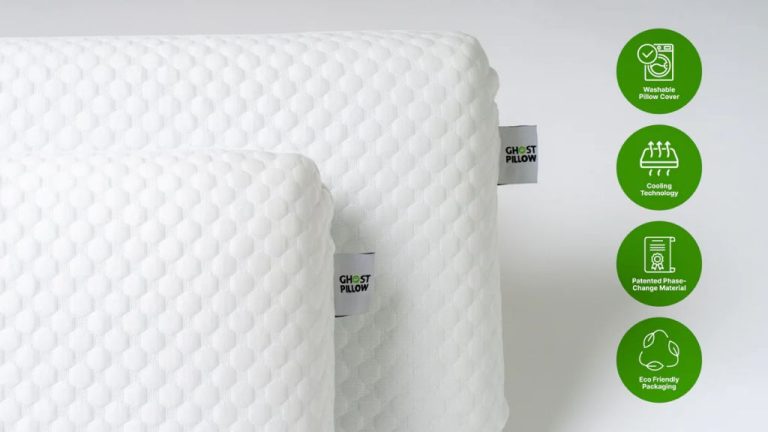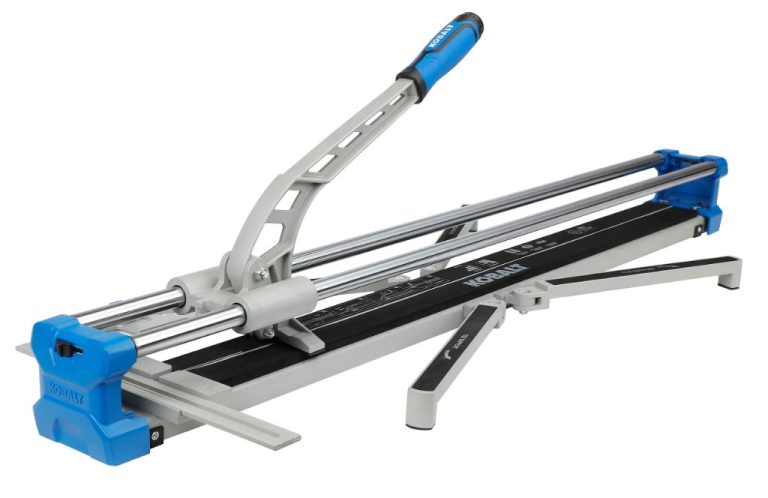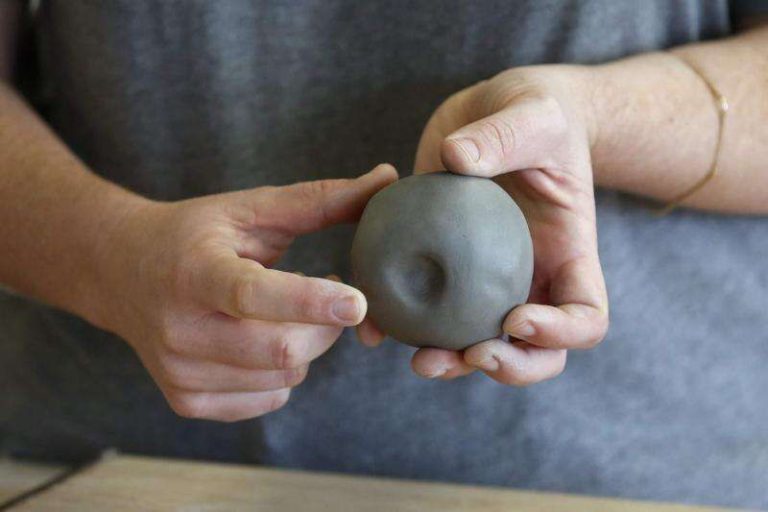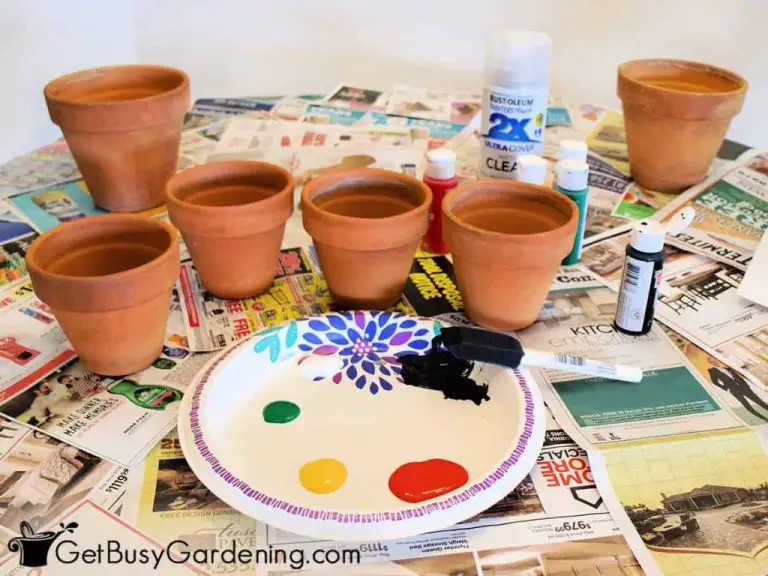Is A Mini Pottery Wheel Worth It?
A mini pottery wheel is a small, portable version of the traditional potter’s wheel used for throwing and shaping clay. As defined by Wikipedia, a potter’s wheel is “a machine used in the shaping (known as throwing) of clay into round ceramic ware.” Mini pottery wheels range from 6 to 12 inches in diameter and are designed for tabletop use, making them convenient for home ceramic artists, beginners, and hobbyists.
Mini wheels are powered by electricity and typically have variable speed controls, allowing users to adjust the spinning speed as needed while throwing. Many models have removable bats or wheelheads to easily transfer pieces after forming. Overall, mini pottery wheels offer a more compact, lightweight, and affordable alternative to full-sized wheels, enabling small-scale clay projects in limited spaces.
Pros of Owning a Mini Pottery Wheel
One of the main benefits of a mini pottery wheel is its small size and easy storage. Mini wheels have a compact footprint, typically around 9-12 inches in diameter, so they can fit on a desk, small table, or counter (Pottery Wheels – A Buyers Guide). This makes them perfect for use in limited spaces like apartments, dorm rooms, or small studios where a full-sized wheel won’t fit.
Their small size also makes mini wheels highly portable. You can transport them between rooms or take them to classes and workshops with minimal hassle. Full-sized wheels are large, heavy, and cumbersome to move around. In contrast, mini wheels only weigh 10-15 pounds so you can easily pick them up and carry them wherever you need to work (Benefits of a mini pottery wheel? : r/DiceMaking).
When not in use, mini wheels tuck away neatly into closets, on shelves, or under tables. You don’t need a dedicated studio space or room to store a mini wheel like you would with a large one. Their compact storage footprint makes them ideal if you have limited space available.
Cons of Owning a Mini Pottery Wheel
One of the biggest downsides to owning a mini pottery wheel is the limited size capacity compared to a full-sized wheel. Mini wheels typically only accommodate clay projects that are 3-6 inches in diameter and 4-6 inches tall at maximum.
This small size restriction makes it very difficult or impossible to throw larger pieces like vases, bowls, mugs, and other functional ware. The small throwing area also provides less stability when centering bigger chunks of clay. According to reviews on Reddit, mini wheels struggle with clay exceeding 2-3 lbs:
The only downside is that because they make them at home, they make small batches and you really have to pounce when they do a drop. I take a max of 2-3 lbs on my mini wheel before it starts to struggle.
While mini pottery wheels offer a convenient, space-saving option for beginners to learn wheel techniques, their size constraints limit the scope of projects you can create. If you want to make full-sized pottery, a mini wheel’s capacity will quickly become frustrating.
Cost Comparison
Mini pottery wheels are generally much more affordable than regular-sized wheels. Mini wheels typically range from around $50 to $200, whereas regular wheels usually start at $300 and can go over $1000 for professional-grade models.
For example, the Amaco Brent Model C Kick Wheel is a popular entry-level mini wheel that costs around $60. In contrast, a beginner-friendly regular wheel like the Shimpo RK-1 costs around $400. Higher-end mini wheels like the Speedball Artista, at around $140, are still just a fraction of the cost of professional full-size wheels.
The lower price point makes mini wheels ideal for beginners who want to try out pottery without a huge investment. It also allows hobbyists to have a space-saving wheel for small home studios. However, serious potters may want the larger capacity and power of regular wheels for throwing larger pieces and doing production work.
According to this article, mini wheels between $50-$150 offer great value for casual potters and beginners looking for an affordable entry into wheel throwing.
Ease of Use
Mini pottery wheels are designed to be user friendly, even for beginners with no prior experience. As this review states, mini wheels like the popular Yofuly model have a short learning curve compared to larger wheels. The small size allows for more controlled movements and stability when centering clay. Beginners can learn the techniques of wedging, centering, and throwing pots on a mini wheel in just a few practice sessions.
Reviews of mini pottery wheels like the Small Ceramics model also emphasize the ease of use even for throwing larger amounts of clay. The strong torque allows stability for making bigger pieces. While mini pottery wheels have size limitations, their compact footprint and intuitive operation makes the learning process simpler for first-time users.
Project Size Capabilities
One of the main pros of a mini pottery wheel is the ability to create small, detailed projects. The compact size allows you to spin pottery pieces that are typically 3-6 inches in diameter and 3-4 inches tall according to Pinterest. This makes mini pottery wheels ideal for crafting miniature decorative items, small bowls, cups, vases, and more. The smaller wheelhead gives you more control for delicate work. You can even make tiny pots for things like trinkets, jewelry, ornaments, and figurines. While you may be limited on size, the intricacy and attention to detail you can achieve is unmatched with a full-sized wheel.
Power and Speed
One of the most important factors when considering a mini pottery wheel is the power and speed it can provide. Mini pottery wheels are powered by either batteries or electricity and typically have lower power motors than full-sized wheels. According to Mini Pottery Wheel Machine, Adjustable Speed, many mini wheels have motors that provide speeds up to 2000 RPM.
While 2000 RPM is generally sufficient for small projects, some mini wheels may struggle with denser clay that requires more torque. The motor strength and quality can vary greatly between models, so it’s important to read reviews and product details. Stronger motors will provide more power and maintain steadier speeds when force is applied during throwing. This allows shaping clay with more control. Weaker motors may slow down or stop when too much pressure is applied.
Materials Needed
To get started with a mini pottery wheel, you’ll need a few basic supplies:
Clay – Pottery clay specifically formulated for throwing on a wheel is recommended. Popular choices include stoneware, porcelain, and earthenware clay. You’ll need about 10-15 lbs of clay to start.
Clay tools – Basic tools like ribs, trimming tools, cutting wires, and fettling knives are essential. A basic tool set can be purchased affordably from most ceramic suppliers.
Slip – Slip is liquid clay used to help join pieces of clay together and provide extra moisture while throwing. A basic 50/50 mix of clay and water works well.
Bats – Bats are surfaces that you throw your pots on top of on the wheel. Plastic bats are lightweight and affordable.
Water containers – Small buckets or bowls for holding water while throwing are very useful.
Sponge – A damp sponge helps smooth surfaces and join clay together.
Towels – Old towels are great for drying hands and cleaning up spills or messes.
A basic starter set of tools and materials like this is very affordable, often less than $50 total. Many mini wheel kits come with the basic essentials included.
Alternatives to Consider
If you’re looking for other small ways to work with clay besides a mini pottery wheel, there are some great options to consider:
Handbuilding techniques like pinch pots, coils, and slabs allow you to create small sculptures and functional pieces without any wheel throwing. This can be done using simple household materials as makeshift work surfaces. While handbuilding takes practice, it gives you full creative control and allows intimacy with the clay (Source).
Small kick wheels are rotational devices that don’t require electricity. They use the momentum from kicking the flywheel to spin the clay. Kick wheels take up less space than an electric wheel and allow throwing tiny pieces. However, they can be tricky for beginners to use consistently (Source).
Consider low-tech options like making your own simple pottery wheel using basic materials like a lazy susan turntable and plastic bucket. While functionality is limited, this can be a fun DIY project before investing in an electric mini wheel.
Conclusion
In conclusion, a mini pottery wheel can be a great option for beginner and hobbyist potters who want an affordable way to learn and practice wheel throwing at home. The smaller size and lower price point make it accessible for those just starting out or those who only throw small pieces occasionally. A mini wheel takes up less space and requires less financial commitment, allowing potters to test their interest before upgrading to a larger professional wheel. While limited in power and capacity compared to standard wheels, mini pottery wheels offer enough capability for small projects, simple shapes, and learning the basics of the pottery wheel. For children, a mini wheel can foster an early interest in pottery as an engaging hands-on activity. Retirees and others with limited space can also appreciate a wheel that packs up neatly. While mini wheels have drawbacks in terms of size and power, they provide an approachable entry point into pottery wheel throwing for beginners and hobbyists.






